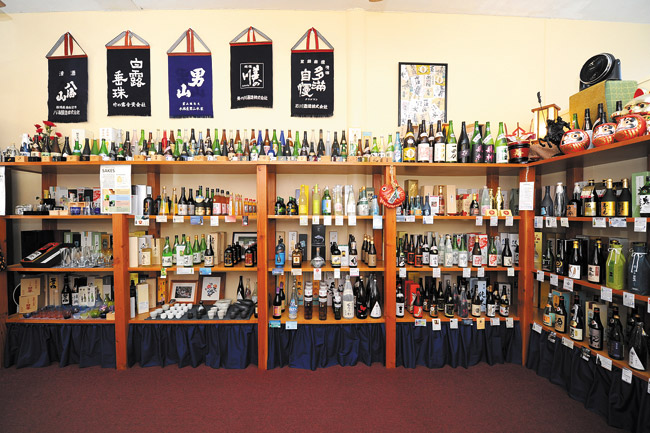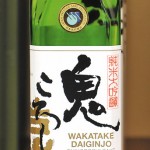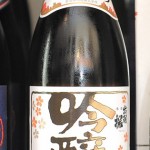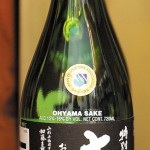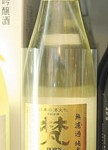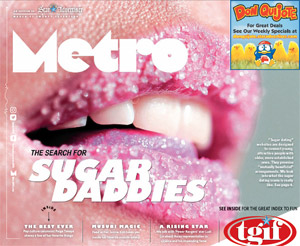Gastronome
THE SAKE SHOP
1461 S. King St.
Honolulu
Phone number(808) 947-7253
websitesakeshophawaii.com
Heading into the latter half of my 20s, my body slowly has begun to reject certain types of alcoholic beverages, like beer. It’s really not a problem, except that it’s made late-night Japanese food with friends considerably less exciting.
As an alternative, I’ve begun ordering sake — and have discovered that sake is a lot like wine, with different flavor profiles and types. And so I’ve found myself in the same situation I was in when I first began drinking wine: ordering blindly.
To get some advice, I reached out to Nadine Leong, who owns and operates the The Sake Shop with husband Malcolm.
Really, like all things, what it comes down to is preference, Leong tells me.
“Everyone’s taste and budget is different,” she says.
And yet, unlike wine, sake easily pleases. Because though you might prefer something fruitier or dry, it all ultimately works well with most food.
Primarily, The Sake Shop carries premium sake, which can be broken down to three different types, as described by Leong:
1) Junmai, which tends to be full-bodied, drier and acidic
2) Ginjo, which tends to be lighter, cleaner, fruitier and more aromatic
3) Daiginjo, which is very aromatic, complex and refined.
Then there are specialty sakes, which include seasonal selections produced in limited quantities. For the most part, profiles are easy to navigate: Slightly salty foods pair well with sweet sakes, sparkling sakes (like champagne) match easily with most foods, and bold flavors go well with just as bold sakes.
Still, if you’re new to sake like myself, choosing a bottle to sample will be overwhelming. And if you’re looking for a more personalized recommendation, Leong suggests making a stop at the shop, where helpful labels under each bottle provide in-depth descriptions and food recommendations.
“We like talking to customers first, and finding out their experience with sake, if any, and their likes and dislikes,” she says.
But for those who are game to try anything, below are a few recommendations Leong has shared with Metro.
(P.S. The Sake Shop regularly holds free tastings. Follow it on Instagram @sakeshop or visit sakeshophawaii.com to take advantage of the next one.)
MEET THE OWNER
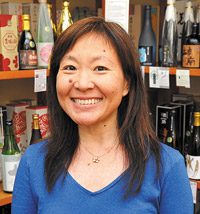 This year, The Sake Shop celebrates five years of business. It’s a venture that began after owner Nadine Leong decided to return to work after spending some time as a stay-at-home mom.
This year, The Sake Shop celebrates five years of business. It’s a venture that began after owner Nadine Leong decided to return to work after spending some time as a stay-at-home mom.
She and husband Malcolm always had enjoyed trips to Japan. But back in Hawaii, they noticed a lack of places to get sake. Grocery stores certainly carried it, but offered only limited selections.
“That’s when we thought, ‘wouldn’t it be nice to have a shop that specializes in sake?'” she recalls.
On average, Sake Shop carries 150 bottles — and yes, Leong has sampled them all.
WHAT IS SAKE?
Ironically, and despite my woes with beer, The Sake Shop owner Nadine Leong tells me that the production of sake closely resembles that of beer. Like beer, rice must first be converted into sugar before it can be fermented.
“This is similar to how barley is malted to produce sugar before being fermented into beer,” she explains.
But unlike other alcohols, sake is very pure and does not include other additives, preservatives or sulfites. At full strength, it contains 20 percent alcohol, the highest for any brewed alcoholic beverage — but Leong explains that most brewers add water to bring out flavor profiles they desire.
Its ingredients consist only of rice, water, yeast and a spore called koji-kin (koji is basically steamed rice that is cultivated into mold, which creates enzymes that break down the starch into sugar to allow for fermentation).
DRINKS
- WAKATAKE JUNMAI DAIGINJO, $42.95 A little pricier (so maybe save it for a special occasion), this sake is described as being flavorful with a slightly sweet taste that goes well with pretty much anything, including spicy food.
- DEWAZAKURA OKA GINJO, $32.95 This one, says Leong, pairs well with sushi. And as its label describes, expect a smooth taste that presents floral notes.
- OHYAMA, TOKUBETSU JUNMAI, $27.95 Leong describes this as a broad recommendation at an average price point. Its label characterizes this sake as dry, crisp and smooth, and one that goes well with creamed chicken, grilled shellfish, sautéed mushrooms and vegetables, and sushi.
- BORN GOLD JUNMAI DAIGINJO, $29.95 Described as being similar to white wine, Leong recommends this sake as one you might want to try with ramen or yakiniku.

